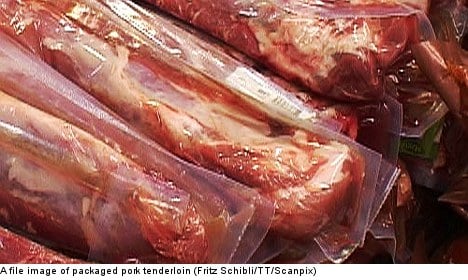The meat manipulation was discovered by wholesaler Svensk Cater after a shipment of what had been sold as beef from Argentina was returned by a customer who complained the meat was too moist, the Svenska Dagbladet (SvD) newspaper reported.
When the wholesaler ordered a new shipment from Swedish meat supplier Heat AB it received meat which was billed as beef from Hungary.
“I tried the product. Then I discovered it had been injected with a lot of a dye,” Thomas Narving of Svensk Cater told newspaper.
The meat was then sent to the National Food Agency for testing which confirmed that the “beef” was in fact pork which had been injected with food colouring.
The agency subsequently issued an EU-wide warning about the meat in part because of concerns about the added dye, and in part because of health risks associated with undercooking pork in the belief that it is beef.
Following the revelations, Heat AB, which sold the meat to several other wholesalers, has been reported to police.
While Svensk Cater hasn’t sold any of the false beef to any clients, it remains unclear whether the meat may have made its way to restaurants or shops in Sweden through other wholesalers.
A representative for Heat AB told SvD that the company purchased the meat from Hungarian supplier Filetto in the belief that it really was beef.
“I’ve been duped,” Heat AB’s Åke Hultberg told the paper.
So far this year, Heat AB has purchased between 30 and 40 tonnes of meat from the Hungarian supplier.
Officials from Svalövs municipality in southern Sweden, where Heat AB is headquartered, are also considering reporting the company to police for operating a food company without having the proper registration.
TT/The Local/dl



 Please whitelist us to continue reading.
Please whitelist us to continue reading.
Member comments